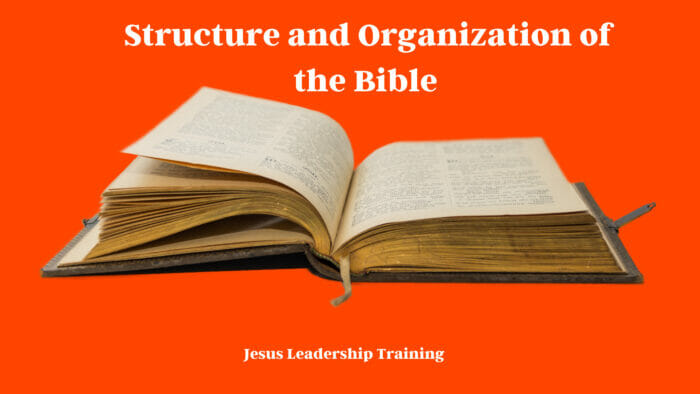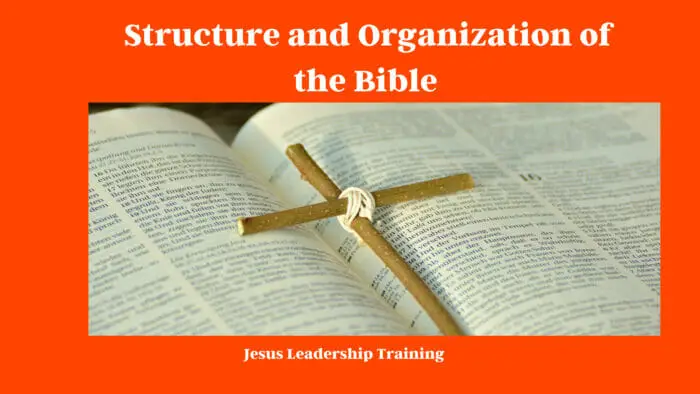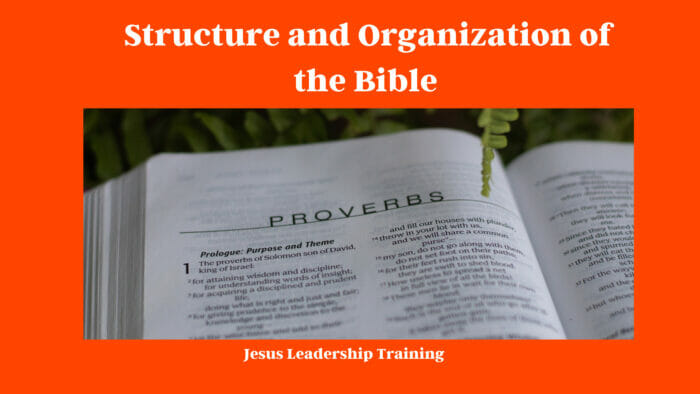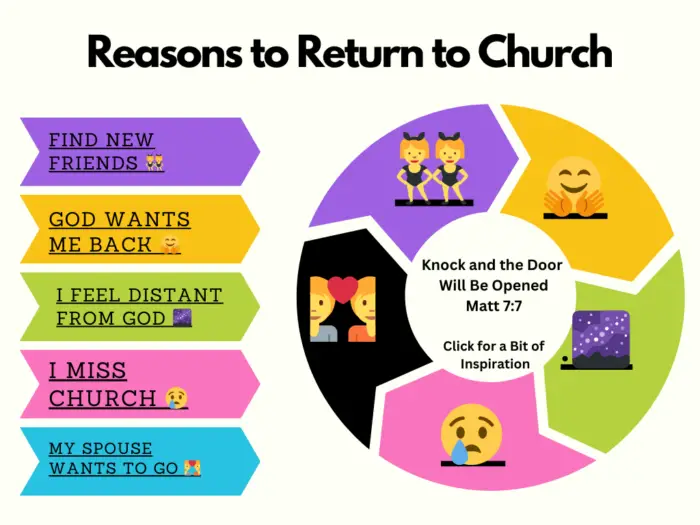Organization of the Bible -The Bible is a remarkable book that holds significant importance in religious, literary, and cultural contexts. Its structure and organization have evolved over centuries, and understanding its composition can enhance our appreciation of its depth and significance. In this article, we will explore the origins, structure, and importance of the Bible, shedding light on its diverse sections and teachings.
Table of Contents
Organization of the Bible
here is a simple table outlining the basic organization of the Bible:
| Section | Description |
|---|---|
| Old Testament | The first part of the Bible, containing books written before the birth of Jesus Christ. It includes historical accounts, laws, prophecies, and poetry. |
| New Testament | The second part of the Bible, focusing on the life, teachings, death, and resurrection of Jesus Christ, as well as the early Christian Church. |
| Books | The Bible is divided into individual books, each with its own unique content and purpose. There are 39 books in the Old Testament and 27 books in the New Testament. |
| Genres | The books in the Bible cover various genres, including historical narratives, poetry, prophecy, letters (epistles), and apocalyptic literature. |
| Divisions | Within the Old Testament, there are divisions such as the Torah (first five books), Historical Books, Wisdom Literature, and the Prophets. In the New Testament, it’s divided into the Gospels, Acts, Epistles, and Revelation. |
| Chapters | Each book is divided into chapters for easier reference and navigation. The chapters are not part of the original text but were added later for convenience. |
| Verses | Chapters are further divided into verses, which are the smallest units for referencing specific passages. This verse numbering system was also added later. |
This table provides a basic overview of how the Bible is organized into sections, books, genres, divisions, chapters, and verses, making it easier for readers to access and study its content.
The Bible is a compilation of sacred texts revered by various religious traditions, including Christianity and Judaism. It is divided into two main sections: the Old Testament and the New Testament. These sections differ in content, historical context, and theological focus. By examining the structure and organization of each testament, we can gain valuable insights into the diverse teachings and narratives contained within the Bible.
The Origins of the Bible
The origins of the Bible can be traced back thousands of years. The texts that comprise the Old Testament were written and collected over several centuries, reflecting the beliefs, history, and culture of the ancient Israelites. The New Testament, on the other hand, focuses on the life, teachings, death, and resurrection of Jesus Christ and the early Christian community.
The Old Testament
The Old Testament forms the first part of the Bible and is considered sacred by both Jews and Christians. It consists of several books that are further categorized into different divisions. The Old Testament encompasses various genres, including historical narratives, wisdom literature, and prophetic writings.

Structure and Composition
The Old Testament is structured into different sections, including the Torah (the first five books), historical books, wisdom literature, and prophetic books. Each section serves a distinct purpose, providing insights into the religious beliefs, moral teachings, and historical events of the ancient Israelites.
Books and Divisions
The Old Testament contains numerous books, including Genesis, Exodus, Leviticus, Numbers, Deuteronomy, Joshua, Judges, Ruth, and many more. These books are further divided into chapters and verses, allowing for easy referencing and study.
Historical and Wisdom Literature
Within the Old Testament, we find historical books such as Samuel, Kings, and Chronicles, which chronicle the history of the Israelite nation. Additionally, the wisdom literature, including Proverbs, Job, and Ecclesiastes, offers philosophical reflections and practical advice for living a righteous life.
Prophetic Books
The prophetic books, such as Isaiah, Jeremiah, and Ezekiel, contain messages of divine revelation and guidance. They explore themes of repentance, judgment, and hope, providing insights into the relationship between God and humanity.
The New Testament
The New Testament constitutes the second part of the Bible and is specifically significant for Christians. It focuses on the life, teachings, death, and resurrection of Jesus Christ, as well as the early development of the Christian faith.

Structure and Composition
The New Testament is organized into different sections, including the Gospels, Acts of the Apostles, Pauline Epistles, and General Epistles. Each section contributes to the overall narrative of the early Christian movement and the teachings of Jesus Christ.
Gospels and Acts
The Gospels of Matthew, Mark, Luke, and John present different perspectives on the life and ministry of Jesus Christ. They offer valuable insights into his teachings, miracles, and the events leading up to his crucifixion and resurrection. The Acts of the Apostles follows the Gospels, providing an account of the early Christian community and the spread of Christianity.
Pauline Epistles
The Pauline Epistles, written by the apostle Paul, form a significant part of the New Testament. These letters address theological concepts, moral issues, and practical guidance for the early Christian communities. They offer insights into the development of Christian theology and the challenges faced by early believers.
General Epistles and Revelation
The General Epistles, including James, Peter, John, and Jude, provide additional teachings and exhortations for believers. The Book of Revelation, attributed to the apostle John, contains apocalyptic visions and symbolic imagery, offering perspectives on the end times and the ultimate triumph of good over evil.
Translations and Versions
Throughout history, the Bible has been translated into numerous languages to make it accessible to people around the world. Ancient translations, such as the Septuagint and the Vulgate, played crucial roles in preserving and spreading the Scriptures. In modern times, there is a wide range of translations available, each with its own approach to rendering the original texts into contemporary languages.

The Importance of the Bible
The Bible holds immense significance for individuals, religious communities, and societies as a whole. It serves as a guide for moral conduct, a source of spiritual inspiration, and a repository of cultural heritage.
Religious Significance
For believers, the Bible is regarded as the word of God, providing spiritual guidance and a foundation for faith. It contains teachings, commandments, and narratives that shape religious beliefs and practices, fostering a deep connection with the divine.
Literary and Cultural Impact
Beyond its religious significance, the Bible has had a profound influence on literature, art, and culture. It has inspired countless works of literature, influenced the development of Western civilization, and provided a framework for ethical and moral discussions.
Conclusion
The Bible’s structure and organization reflect its diverse origins and the profound impact it has had on humanity. Understanding the different sections, books, and themes within the Bible enhances our appreciation for its teachings and the rich tapestry of human experience it encompasses.
FAQs
- Is the Bible only relevant to religious individuals?
- No, the Bible has literary, cultural, and historical significance beyond its religious relevance.
- How many books are there in the Old Testament?
- The Old Testament contains 39 books in total.
- Are there different versions of the Bible?
- Yes, there are various translations and versions of the Bible available in different languages.
- Are the Gospels the same in content and perspective?
- No, each Gospel presents a unique perspective on the life and teachings of Jesus Christ.
- What makes the Bible a revered book?
- The Bible’s enduring significance lies in its teachings, moral guidance, and its impact on religious and cultural traditions.
In this article, we have explored the structure and organization of the Bible, delving into its diverse sections, books, and teachings. The Bible stands as a testament to the human quest for meaning, moral guidance, and spiritual enlightenment. Its influence spans across religions, cultures, and centuries, shaping the lives of countless individuals. Whether approached from a religious or literary standpoint, the Bible continues to hold immense value and relevance in today’s world.
Best Bible Encyclopedias and Dictionaries
Below is a table featuring some highly regarded Bible Encyclopedias and Dictionaries along with their publishers and websites where they can be found or purchased.
| Title | Publisher | Website |
|---|---|---|
| The International Standard Bible Encyclopedia | Eerdmans | Eerdmans |
| Zondervan’s Pictorial Bible Dictionary | Zondervan | Zondervan |
| Easton’s Bible Dictionary | Thomas Nelson | Thomas Nelson |
| Holman Illustrated Bible Dictionary | B&H Publishing Group | B&H Publishing Group |
| The New Unger’s Bible Dictionary | Moody Publishers | Moody Publishers |
| HarperCollins Bible Dictionary | HarperOne | HarperOne |
| Vine’s Complete Expository Dictionary of Old and New Testament Words | Thomas Nelson | Thomas Nelson |
You can generally find these resources on the publishers’ websites, as well as other online book retailers such as Amazon or Christianbook. It’s always good practice to confirm availability and review additional details on the specific websites or other reliable online bookstores.





